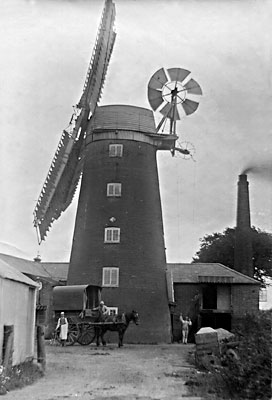
|
Salhouse towermill
|
 |
|
c.1890 |
|
Salhouse towermill stood on the east side of Mill Road on the south side of the village. The 5 storey mill had a Norfolk boat shaped cap with a petticoat and an 8 bladed fantail. Four double shuttered patent sails, each with 7 bays of 3 shutters and struck by rack and pinion powered 3 pairs of French burr stones and a jumper screen. One pair of stones was 4ft 6 ins and trhe other two pairs were 4ft. A steam mill that drove a single pair of 3 ft stones was situated in the granary.and a maltings were also on the same site. |
Preliminary Notice |
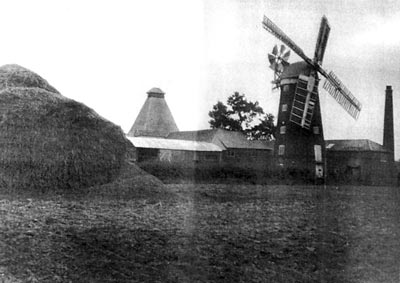 |
|
c.1900 |
There were two bakehouses in Salhouse - remembered by people in the village - one, now called "The Old Bakehouse" in Lower Street, near Mill Hill, for a time a shop called "Farman & Walters", and one behind Coe's shop at the Mill Road end of the village. |
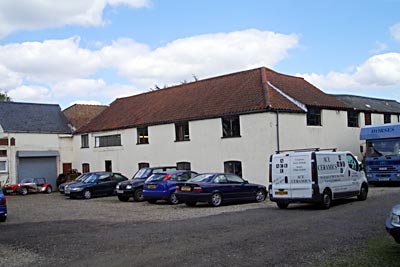 |
8th August 2006 |
The Salhouse site still has some buildings from the mill's era standing (as shown in the modern photo which is a closer view but from the same angle as the historic one) but is due to be redeveloped shortly. None of the buildings on site is of sufficient interest to warrant insisting they be kept but they are to be recorded before demolition. |
My paternal grandfather was the school master John Newcater mentioned in your c.1970 article. He was born in 1872 in Edinburgh, educated at the Royal Caledonian School Holloway, London and St Mary's College Bangor. He took the teaching post in Salhouse in 1899 where he met and married my grandmother Jessie Woodrow who was the daughter of the local blacksmith and also a teacher at Salhouse School, they had four children. In 1919 He went on to become the headmaster of the Royal Caledonian Schools he had attended as a boy, and retired in 1933 in Bushy Hertfordshire where the Caledonian School had moved to by then. Stories from my father who was a pupil at Salhouse School, included: The sad stories of children who went to school with no shoes and ate turnips from the fields on their way to school because they were hungry. Happy recitals and music making evenings in the village hall. A footpath called 'Newcater's Path' from the village to the church across a field. Poachers' booty being hidden and sent in laundry baskets by train to London. |
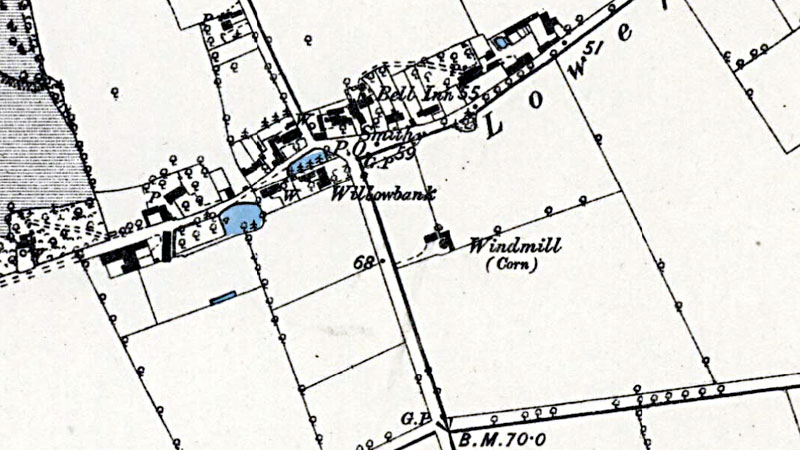 |
O. S. Map 1881 Courtesy of NLS map images |
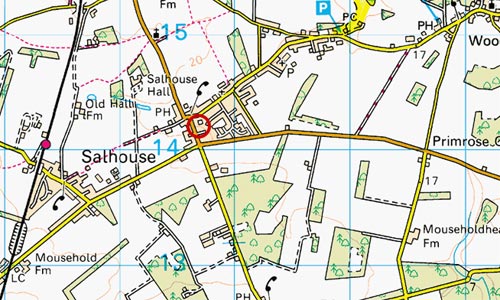 |
O.S. Map 2008 Image reproduced under licence from Ordnance Survey |
It is not certrtain that Benjamin Bowen was occupying the site in 1851, although it seems to be the most logical option before moving to Salhouse postmill by 1853. |
|
White's 1864: Harcourt Howlett jnr., cattle dealer |
1853: Thomas Fiddy, miller
1882: Horace Howlett, miller
Kelly's 1900: Horace Howlett, miller (wind & steam), corn & coal merchant & farmer, Salhouse station Kelly's 1904: Horace Howlett, miller (wind & steam), corn & coal merchant & farmer, Salhouse station Kelly's 1908: Horace Howlett, miller (wind & steam), corn merchant 1980s: Ford Agricultural Engineers 1901: Mr. Read, miller |
If you have any memories, anecdotes or photos please let us know and we may be able to use them to update the site. By all means telephone 07836 675369 or
|
| Nat Grid Ref: TG30721422 |
Copyright © Jonathan Neville 2007 |